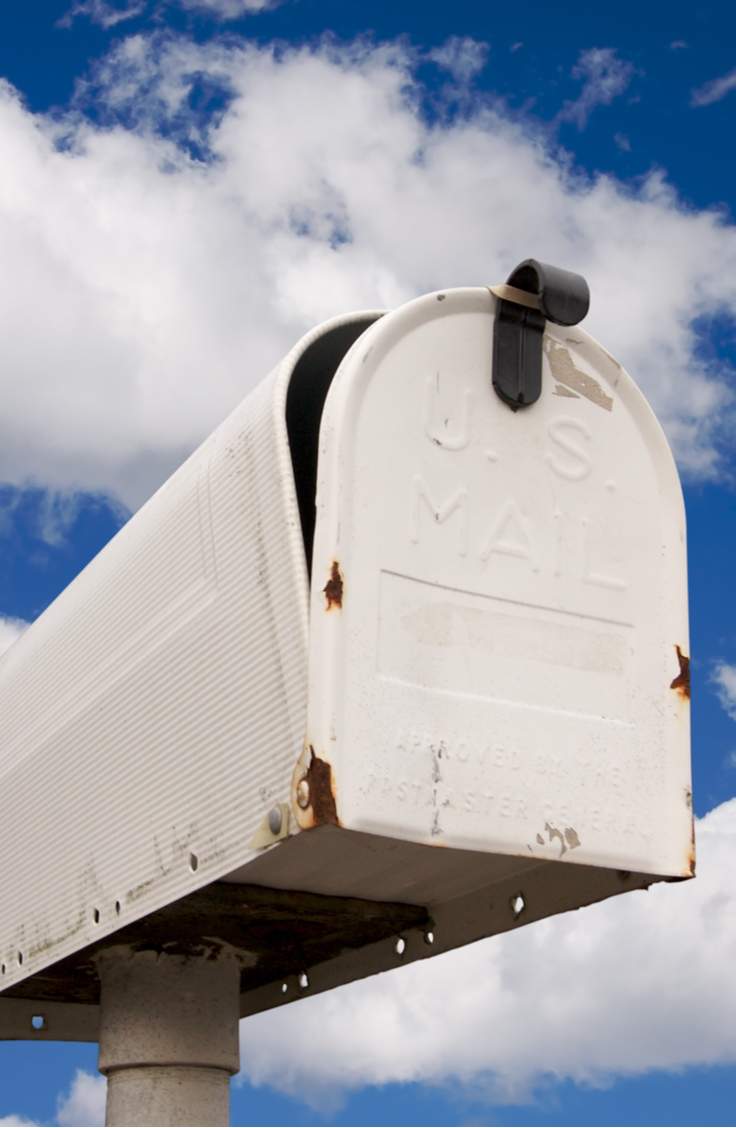
Best practices for Microsoft 365 inactive mailboxes and departing employee data
- By:
- Bill Tolson |
- November 16, 2021 |
- minute read
The following is a true story. Really. Not only does it serve as a cautionary tale in relation to Microsoft 365 inactive mailboxes, but it also highlights the importance of assessing the value of departing user data rather than blindly deleting it. (FYI, the names have been changed to protect me.)
Several years ago, I received a call from a friend I used to work with at another company. They were looking for an interactive Excel TCO/ROI/NPV/BET model I had developed while employed at the company. It was a massive model in which I had invested 2-3 months of work. It became a much-requested tool for sales to reference that showed how a cloud-based archive could dramatically lower the overall TCO of archiving while (in most cases) showing a positive return on investment (ROI), profitable net present value (NPV), and a really short breakeven time (BET).
The downside was that it was relatively complex (it combined hundreds of calculations across eight different Excel pages) and so was difficult for many in sales (and everyone else) to explain. Because I created it, I ended up being the designated presenter of the model at customer meetings and calls. This meant that I was the one that kept the master version and, over time, the only person that had a copy of the model.
Do you by chance still have…
Getting back to the call from my good friend and ex-coworker, he asked me if I still had a copy of the TCO/ROI model and, if so, whether I could send it to him. It turns out that they had a very large potential customer that wanted to see a detailed ROI calculation and description of their situation. It seems the salesperson had mentioned that the company had a TCO/ROI model (mine) that would provide a detailed TCO analysis of the customer's current technology and create a detailed ROI/NPV/BET calculation if the customer replaced it with the new technology.
Wanting to close the sale, the company had spent a great deal of time looking for the actual model but couldn't find it. The customer was pushing hard to get the TCO/ROI results or, if not, choose another vendor's solution.
It's on my laptop
In fact, I did not have a copy of the model – I swear! Part of the company's exit process for departing employees included being presented a legal form to sign to certify that I had deleted ALL data/files I had generated and received while employed at the company – under penalty of prosecution. I took that very seriously and did delete everything.
I mentioned to my friend that when I had turned in my laptop on the last day of work, I had written a long email to my managing VP giving him all my passwords, share drive locations, etc. In fact, I believe I also noted to my manager that it would be stupid to reassign the laptop to another employee in the near term because of the useful data the laptop contained. It turns out that they had wiped and reimaged my laptop within a couple of weeks, and all the data on the laptop was irretrievably gone.
It's in my inactive OneDrive account
Also, in that final email to my manager, I had pointed out that my Microsoft 365 email and OneDrive account also contained data they would find useful (including the TCO/ROI model) and to not reassign the Microsoft 365 license until my data had been copied to another repository that people in my group could access when needed. Of course, the company quickly reassigned the Microsoft 365 license and lost all my files.
Let's understand what it means to delete a Microsoft 365 license holder and transfer that license to another. When you delete a user in the Microsoft 365 admin center, the company can choose what will happen with the departing employee's product licenses, email, and OneDrive data.
One possibility many companies choose is to grant access to the departed employee's accounts so they can review and download what they think will be needed in the future. That designated user will have 30 days by default to access and download any data they want to keep. After the 30 days, the OneDrive Clean Up process is run, and all data in that Microsoft 365 account will be deleted at the end of the 30 days. If a manager is specified for the deleted account, the manager will receive an email telling them they have access to the departed employee's OneDrive, and that the OneDrive will be deleted at the end of the 30-day retention period. Seven days before the 30-day retention period expires, a second email will be sent to the manager or secondary owner as a reminder that the OneDrive will be deleted in 7 days.

FOLLOWING MICROSOFT'S MIGRATION ADVICE MAY NOT BE THE BEST CHOICE FOR YOUR BUSINESS - HERE'S WHY
If you have inactive users in your archives, you can simply delete them or migrate them all when you move to Microsoft 365, right? Unfortunately, it’s not that simple. This article outlines the technical, regulatory, and compliance challenges you’re likely to face, the alternatives available, and why Microsoft’s suggested method for inactive user migration may not be (in our opinion) your best option.
Best practices for Microsoft 365 inactive mailboxes and departing employee data
I never asked my friend what happened with the potential deal but, for me, it highlighted an important missing process in many companies – that of treating departing employee data as valuable (also, in some cases, legally required).
At the end of the day, companies hire employees for their abilities, know-how, creativity, and experience. Blindly destroying the data, they work with and create is a huge waste for the sake of freeing up a Microsoft 365 license, especially when options exist to both store leaver data securely and reassign their licenses without risking legal or business disruption.
Some of our customers do think about the implications of reassigning the license of a departing employee. Many come to us with questions like: "We're spending a fortune on Microsoft 365 licenses for employees that have left the organization. We want to recycle them, but what should we do with all of the departed employee's Microsoft 365 data?" Believe it or not, this shows a great deal of progress in their thinking. Unfortunately, however, many companies, as in the example above, still reassign the Microsoft 365 licenses of departed employees indiscriminately and, in doing so, delete all their data.
As IT and corporate legal departments well know, inactive and departed employee data – including inactive Microsoft 365 mailboxes, OneDrive accounts, Teams conversations and files (including videos), can put a strain on the IT department, including the costly consumption of Microsoft 365 licenses, rising privacy risk, and expensive eDiscovery response. That said, an important part of the employee exit and data management process, safeguarding employee data should be top of mind for HR, IT, and Corporate Legal, and when an employee gives notice or is RIF'd, an HR checklist should be followed, with a set of actions to perform before the employee departs.
However, in many cases (if the checklist even exists), it does not address what to do with the employee's most valuable asset – their accumulated work data. In fact, valuable corporate data exists in all Microsoft 365 mailboxes, OneDrive accounts, local workstation data, and SharePoint servers, but many HR processes don't include the proactive collection of employee data before departure. Jumping too quickly to delete a departed user's account (and the associated data) can rid you of the chance to access crucial information and runs the risk of regulatory non-compliance. Once you go far enough down the line and data is permanently deleted, there's no magic button marked 'recover inactive mailbox'. Microsoft 365 simply kills those files for good.
The process should see IT alerted immediately to begin capturing and consolidating leaver data and migrating it into data repositories, such as those in a corporate cloud, where it can be secured, managed, and accessed by authorized employees. The immediate thinking should never be 'delete inactive mailbox'. Microsoft 365 licenses shouldn't be valued more than often crucial leaver data. Your GC may want to keep all email and OneDrive data for an extended time in case lawsuits (i.e., wrongful termination) crop up during the statute of limitations, as well as keeping it available for use and reference for current employees.
Why don't organizations have better processes for inactive Microsoft 365 licenses?
It's hard to say definitively, but in my experience, most companies simply haven't thought of it or haven't developed a standardized process to collect and manage employee data. Often, it's because the IT department is overworked and so instead chooses to keep the departed employee's mailbox and Microsoft 365 account "as is" until the time they have more data. Eventually, someone in IT notices the growing number of departed employee mailboxes and wonders how much the company is spending on licenses for Microsoft 365. Show inactive mailboxes to whoever controls the company purse strings, and they'll likely jump at the chance to claw back some of the outlay. Look at your own Microsoft 365 inactive mailbox cost, and you'll probably want to do the same.
In a recent example, a customer noticed they were paying for 8,000 inactive mailboxes in an Microsoft 365 BPOS subscription and 7,000 inactive mailboxes in their standard Microsoft 365 subscription – totaling 15,000 Microsoft 365 E5 licenses. They had estimated that the 15,000 Microsoft 365 inactive mailboxes were costing them approximately $5 million annually in subscription costs. In another example, a mid-size U.S. city told me that over 55% of their current Microsoft 365 mailboxes were from departed employees.
Inactive Microsoft 365 mailboxes versus shared mailboxes
Currently, when an employee leaves a company, many organizations will quickly reassign the employee's Microsoft 365 account to pass the license to another employee. Alternatively, they'll cancel it altogether to save on cost. The departed employee's mailbox data is retained for 30 days after the license is removed. During this period, the company can still recover the mailbox data by undeleting the account. However, after 30 days, the data is permanently deleted – raising the risk of destruction of evidence or spoliation claims if the data is potentially responsive in current or anticipated litigation.
A common method for preserving departed employee data is by converting an Microsoft 365 mailbox to a "shared mailbox." The main driver for the popularity of this strategy is that Microsoft 365 shared mailboxes are free. However, there are several complicating issues with shared mailboxes:
- Every user that accesses the shared mailbox must be assigned a Microsoft 365 license
- The maximum size of a shared mailbox cannot exceed 50 GB. After that, it must be licensed
- It cannot be used to archive emails
- It cannot be used for Journaling
- Storing emails in a shared mailbox does not guarantee immutability – a legal defensibility issue due to the potential destruction of evidence or spoliation
- Chain of custody is broken as the individual mailbox owners moved to a shared mailbox will no longer exist.
- It cannot be accessed using an Outlook client
Depending on access rights to the shared mailbox, approved employees can still delete or edit content in a shared mailbox – also a legal defensibility issue. To mitigate the risk of data loss due to delegates deleting shared mailbox content, the organization should apply read-only access policies instead of the default full mailbox access. However, this does not apply immutability to the data and could cause the data to be called into question later by regulators, auditors, or opposing counsel in a litigation setting.
The immutability issue (#5 above) can catch many by surprise, especially corporate attorneys. If immutability is required for legal reasons, i.e., proof that evidence has not been altered, the shared mailbox should have an "In-Place Hold" applied, which requires costly Microsoft 365 licenses – defeating the "no-cost" benefit. Transferring inactive users to a shared mailbox also means you can't search for information effectively (#6 above) because the shared mailbox becomes the owner of all the messages within it. This means you can't look up the inactive user by name and are forced to carry out searches using the To and From fields or as full-text searches based on a specific SMTP address. It adds time and complexity in the case of an investigation or specific request.
Furthermore, the shared mailbox size limitation (#2 above) will force the creation of additional shared mailboxes. Looking at the previous example where the company had 68 TB of inactive mailboxes, it would take 1,360 shared mailboxes to hold 68 TB of departed employee mailbox data – a management and legal nightmare.
The Microsoft 365 inactive mailbox approach
Alternatively, the Microsoft-recommended method for preserving departed employee mailbox data is through declaring (programmatically) the mailbox inactive. Declaring a mailbox inactive is also free and allows the release of the corresponding Microsoft 365 license. How to mark a Microsoft 365 mailbox as inactive is a fairly easy process too.
To setup inactive mailboxes in Microsoft 365, you first need to apply an In-Place Hold on the entire mailbox; you can then delete the corresponding user object. Any licenses assigned to the user will be released for reuse at that stage. This approach seems to be a simple one but, when you dig into the details, there are a number of issues (as we've outlined in this post) when it comes to an inactive mailbox. Microsoft 365 has a few quirks that might lead you to rethink your strategy.
In Part II of this post, we’ll discuss alternative and best practice strategies for managing inactive user mailboxes. This includes how to address inactive user data during a migration to Microsoft 365 and during a legacy archive migration.
The Cloud Archive Organizations Trust
Archive360's Archive2Azure is the cloud archive trusted by enterprises and government agencies worldwide. Purpose-built to run in the hyperscale cloud, it is installed and run in your organization's own public cloud tenancy, where you retain all the power, flexibility, and management while maintaining complete control of your data and its security including encryption keys that only you have access to. Additionally, unlike on-premises and SaaS archiving solutions, you are free to unlock valuable insights via data analytics and carry out powerful searches on your data using the latest cloud-based tools that will benefit multiple teams across your business, from HR to legal and compliance.
Find out why major, regulated organizations around the world trust Archive360 with their most sensitive data. Get in touch to request a demo today.
Bill is the Vice President of Global Compliance for Archive360. Bill brings more than 29 years of experience with multinational corporations and technology start-ups, including 19-plus years in the archiving, information governance, and eDiscovery markets. Bill is a frequent speaker at legal and information governance industry events and has authored numerous eBooks, articles and blogs.






